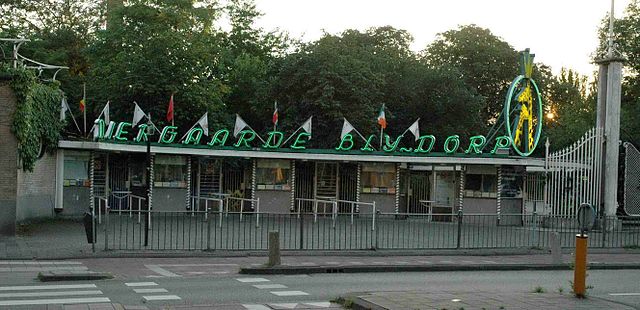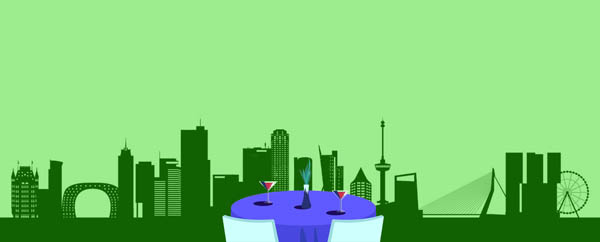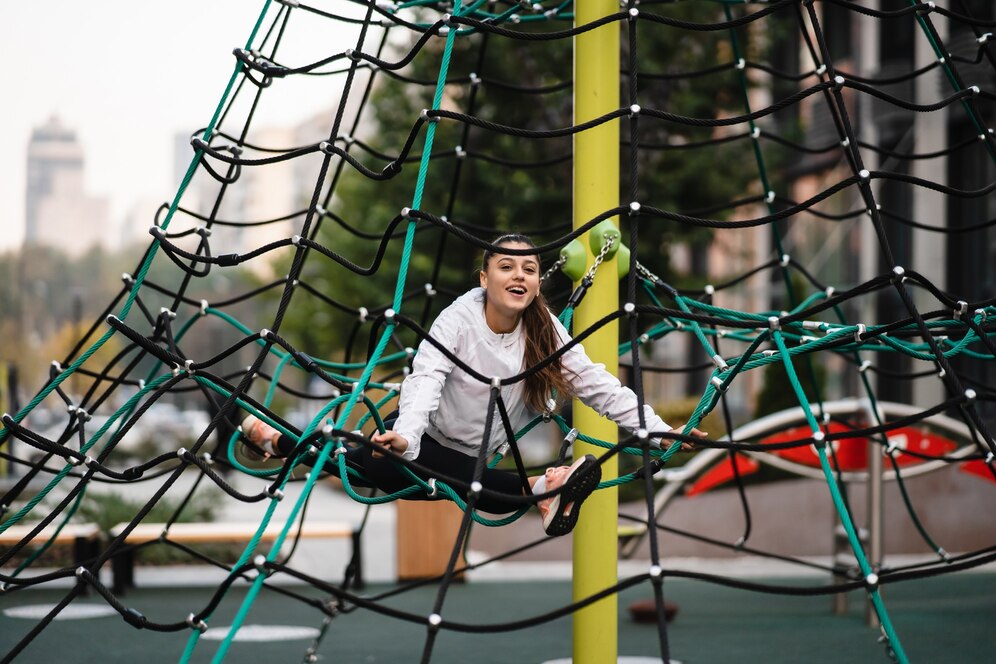
Free Ticket Blijdorp Zoo. Virtual Tour. 100% Discount!
by Rotterdam Balloon Company, 2024-11-30
Table of Contents
Disclaimer: We receive a small commission from some of the links on this page.
Diergaarde Blijdorp, one of the most beautiful zoos in the Netherlands, attracts thousands of visitors every year. But what if you want to avoid the crowds at the ticket office, don't want to pay an entrance fee and still want to see the impressive animals up close? Thanks to Google Streetview, you can now make a virtual visit to this iconic zoo for free and without long queues! From the majestic Asian elephants to the colorful fish in the Oceanium - everything can be admired with a few clicks, simply from home.
In Diergaarde Blijdorp you can virtually hop from area to area. Start your day in the underwater world of the Sustainable North Sea area and continue your world trip with a visit to the Asian elephants in Asian Corridors or the red pandas in the Himalayan Peaks impact area. Experience Blijdorp and marvel at nature from all corners of the world, where you can imagine yourself on the African savannah with giraffes, zebras and kudus, or take a look at the second largest rainforest in the world.
In this article we take you on a virtual tour of Blijdorp. With handy windows you can zoom in directly on the different parts of the zoo and with one click you come face to face with your favorite animals. As you walk through the underwater tunnel of the Oceanium, sharks and sea turtles swim above your head, while in other areas you literally experience nature up close. This way you can take a unique tour of the zoo and enjoy everything Blijdorp has to offer, without needing a ticket. What are you waiting for? Dive with us into this virtual jungle!
Note! At ANWB, you can get € 2,- off your visit to Diergaarde Blijdorp
Sharks
At Diergaarde Blijdorp’s Oceanium, you can explore the fascinating world of sharks in the impressive Shark Tunnel, which runs through the largest aquarium for North Sea fish. Here, sharks and sea turtles swim literally above your head, creating a unique underwater experience. The Oceanium takes you on a journey through the oceans and also offers a glimpse of land habitats, featuring areas such as the coral reef, kelp forest, and the 'Sea of Cortez.' This versatile environment combines education and experience, allowing visitors to learn about the critical role of sharks in ocean ecosystems. The Shark Tunnel remains one of Blijdorp’s top highlights, where you can come face-to-face with these awe-inspiring predators.
Prairie Dogs
The prairie dogs at Diergaarde Blijdorp are a favorite attraction, especially among younger visitors. These social and playful rodents live in an open enclosure opposite the Oceanium, where you can watch them dig, nibble, and stand on guard. Visitors can view the enclosure up close, even through a special tunnel in the middle of the habitat. Despite their cute appearance, prairie dogs are wild animals, and Blijdorp emphasizes that touching or feeding them is not allowed. This behavior could lead to bites, which is why warning signs with clear advice have been placed. Originating from the grasslands of North America, these animals remain a fascinating part of the zoo due to their unique behavior and playful nature.
Polar Bears
The polar bears at Diergaarde Blijdorp live in a specially designed enclosure that resembles their natural tundra environment. The habitat features two large areas with low vegetation, rock formations, and deep saltwater pools where the polar bears can swim and play. To physically and mentally stimulate the animals, zookeepers hide food or spread honey and peanut butter on rocks. This contributes to their well-being and mimics hunting behavior in the wild. With their impressive size and playful demeanor, the polar bears are a beloved attraction at Blijdorp, where sustainability and animal welfare are key priorities.
Bison
The American bison, iconic hoofed animals of the Wild West, have returned to the Prairie at Diergaarde Blijdorp. After a thorough renovation, their habitat has been enriched with rolling hills, boulders, tree trunks, and an improved drainage system. The herd enjoys a revamped landscape where nature conservation and animal welfare are central. Surrounded by newly planted greenery, the Prairie will soon be connected by a walking path to other areas, such as the polar bear habitat and Amazonica. Visit these impressive animals and experience their majestic presence at Blijdorp!
Giraffes
The reticulated giraffes at Diergaarde Blijdorp are a striking sight with their long necks and unique net-like coat patterns. They live in a spacious outdoor enclosure with a wooden bridge that allows visitors to admire them at eye level. The habitat includes high-hanging feeders to encourage the giraffes' natural browsing behavior. As participants in the European population management program, Blijdorp contributes to the conservation of this endangered species, which faces habitat loss and poaching in the wild. With their social behavior and graceful appearance, the giraffes remain a favorite among zoo visitors.
Zebras
The zebras at Diergaarde Blijdorp are found on the African savanna, where they coexist with other iconic African animals such as giraffes, kudu, and ostriches. Blijdorp is home to Chapman's zebras, recognized by their distinctive stripes with brown shadow stripes. Each zebra's coat pattern is unique, allowing easy identification of individuals even within a large herd. Younger zebras start with light brown stripes that transition to the classic black-and-white pattern within a month. With access to a stable, the zebras usually prefer the outdoors, even in colder weather. Their natural adaptations ensure they thrive at Blijdorp, where visitors can experience the savanna up close.
Hyenas
The spotted hyenas at Diergaarde Blijdorp reside in a newly designed naturalistic enclosure in the savanna area, adjacent to giraffes and kudu. While predator and prey cannot see each other, they can hear and smell one another, encouraging natural behaviors. The habitat offers three hyenas—a male and two adult sisters—a water stream, rocks, logs, and a real den. Robust fencing and mesh in the ground ensure these powerful diggers remain safely contained. Fascinating for their social behavior and vital ecological role, hyenas also educate visitors about their unique adaptations, including the similarities in genital structure between males and females, making them a truly intriguing species in the zoo.
Crocodiles
The Nile crocodiles at Diergaarde Blijdorp inhabit the Crocodile River, an impressive section of the savanna area where visitors can observe these ancient reptiles up close. Recently, young crocodiles unexpectedly hatched from eggs, despite Blijdorp's conscious decision not to breed this species due to a surplus in captivity. While adult crocodiles fiercely protect their eggs, they lose their parental instincts once the hatchlings enter the water, making survival for the young a challenge. The habitat includes naturalistic features and is shared with playful rock hyraxes, offering a fascinating contrast between species. The Crocodile River remains a popular spot in Blijdorp for visitors eager to see these formidable predators.
Tigers
The Sumatran tigers at Diergaarde Blijdorp are impressive predators and the smallest tiger subspecies in the world. These critically endangered big cats have a spacious enclosure in Blijdorp with dense bamboo vegetation, providing plenty of hiding spots and mimicking their natural habitat. The habitat consists of two outdoor areas and two indoor spaces that can be connected as needed. Sumatran tigers are naturally solitary and territorial, a behavior respected at Blijdorp. The zoo actively participates in the European population management program to maintain a healthy reserve population and raise awareness about the conservation of this unique species, which is now found only in a few places in the wild on Sumatra.
Elephants
The elephants at Diergaarde Blijdorp live in an impressive enclosure designed to meet their natural needs. This spacious area offers both indoor and outdoor spaces, complete with water features, sand, and shaded areas for relaxation. The Asian elephants at Blijdorp live in a social herd, replicating their natural behavior. These majestic animals play a crucial role in their ecosystems, both in the wild and in the zoo, where they are a symbol of conservation. Blijdorp actively participates in the European population management program to contribute to a healthy and genetically diverse population of Asian elephants. Visitors can watch the elephants as they play, bathe, or graze and learn about the threats these magnificent animals face in the wild, such as habitat loss and poaching. Blijdorp is dedicated to education and conservation to protect these animals for future generations.
Camels
The camels at Diergaarde Blijdorp can be found in the Mongolian Steppe, a naturalistic habitat mimicking their original environment. These remarkable animals, recognizable by their two humps, are perfectly adapted to extreme weather conditions. In winter, they develop a thick coat, which is replaced by a summer coat in spring. This winter fur sheds in patches, creating a unique sight for visitors. Camels also have distinctive eyebrows that act as sun visors, protecting them from bright sunlight. Known for their endurance in harsh conditions, the camels at Blijdorp are a beautiful example of animal adaptation. Their habitat near the Himalayan area adds to the diversity of Blijdorp’s animal collection.
Rhinos
The eastern black rhinos at Diergaarde Blijdorp are impressive residents of the African savanna. With their powerful build, distinctive two horns, and flexible upper lip used to grasp branches and leaves, they are a fascinating sight. In the wild, these critically endangered animals are found mainly in Kenya and Tanzania, but poaching poses a significant threat due to the illegal trade in their horns. Blijdorp actively contributes to the conservation of this species through the European population management program and partnerships with initiatives like the Save The Rhino Foundation. In Blijdorp, the rhinos have individual enclosures designed to support their solitary behavior and provide them with a quiet, natural environment. Visitors can admire these iconic animals while raising awareness about their protection.
Gorillas
The western lowland gorillas at Diergaarde Blijdorp are awe-inspiring residents, fascinating with their strength and touching with their social behavior. These largest primates in the world live in a spacious outdoor habitat with trees, rocks, and caves that provide shelter and challenges. Inside, the gorillas have climbing facilities, and parts of the windows are shielded for extra peace. In the wild, western lowland gorillas play a crucial role in the ecology of African rainforests by dispersing seeds from fruits, but unfortunately, they are critically endangered due to deforestation and poaching. Blijdorp actively supports the conservation of this species through population management programs, conservation projects in Congo, and initiatives like collecting old cell phones to reduce demand for coltan, a major cause of deforestation. Although Blijdorp will gradually phase out the gorillas as part of the Master Plan 2050, these animals remain a poignant reminder of the importance of conservation and sustainability.
Flamingos
Near the old entrance of Diergaarde Blijdorp, you’ll find the flamingo habitat, a beautifully designed area where visitors can admire the greater flamingos up close. These elegant pink birds, found in the wild in Africa, the Middle East, and the Mediterranean region, are iconic and remain a favorite among visitors of all ages. The habitat includes a water feature, nesting pond, and grassy area, giving the flamingos ample space to display natural behaviors like wading, swimming, and nesting. A net over the habitat protects the birds from predators and prevents them from flying away, while open sightlines allow visitors to enjoy the vibrant spectacle fully.
Continue your digital journey through Diergaarde Blijdorp and discover the zoo's most beautiful spots for yourself. From the polar bear enclosure to the tropical ambiance of the Oceanium tunnel, there’s so much to see! Have you spotted other great locations during your virtual tour of Blijdorp? Leave a comment below and inspire others with your tips!
Tags
Click on a tag for an overview of articles with the same topic.
blijdorp-zoo
Comments 0
 Rotterdam Balloon Company
Rotterdam Balloon Company










